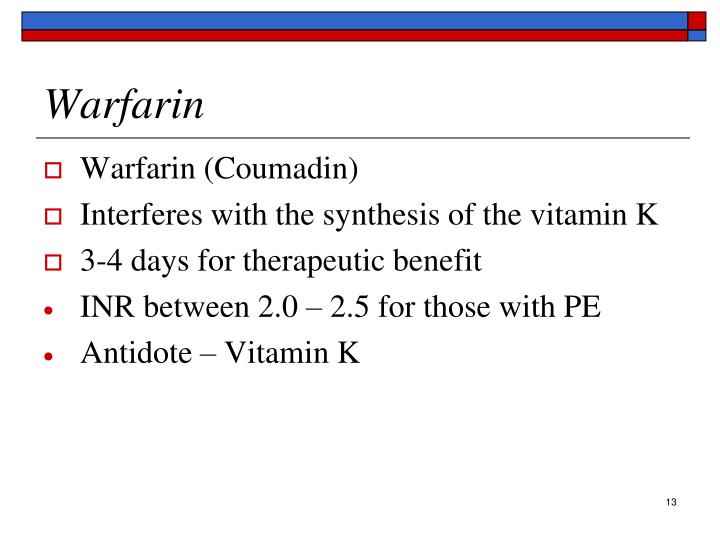
2 However, an earlier observational study of 114 asymptomatic patients taking warfarin with an INR >6.0 managed without vitamin K reported major bleeding in 5 patients (4.4% 95% confidence interval, 1.4%–9.9%) during 14 days of follow-up. In one observational cohort of 1104 warfarin-treated asymptomatic patients with a single INR value between 5.0 and 9.0 (90% of whom were managed with simple warfarin withdrawal), only 0.96% experienced major hemorrhage within 30 days. However, there is uncertainty about the short-term risk of major bleeding in such a patient. 1 Low-dose oral vitamin K is often considered in such situations because INR elevations like the one described here can be quite alarming to both the patient and the clinician. This patient's INR will return to the therapeutic range more quickly if she receives low-dose oral vitamin K (as opposed to simple warfarin withdrawal). For an asymptomatic patient whose INR is >5, warfarin should be withheld for at least 1 dose, and close follow-up monitoring should be arranged. Irrespective of whether a cause for the INR increase can be identified, the patient should be interviewed and examined to ensure she is not bleeding. In this case, the antibiotic is the likely cause, but it is not unusual for an INR measurement to exceed 3.0 without explanation. Supratherapeutic INR values are common in warfarin-treated patients. Her international normalized ratio (INR) is reported as 8.6. She has recently begun taking trimethoprim/sulfamethoxazole. She takes warfarin for atrial fibrillation.

American Heart Association Stroke Council. Antithrombotic therapy in children: the Seventh ACCP Conference on Antithrombotic and Thrombolytic Therapy. Antithrombotic therapy in neonates and children: American College of Chest Physicians Evidence-Based Clinical Practice Guidelines (8th Edition). Lexi-Drugs Online/Pediatric Lexi-Drugs Online, Warfarin,, Copyright © 1978-2008 Lexi-Comp, Inc, Hudson, OH 44236 Lexi-Drugs Online/Pediatric Lexi-Drugs Online, Kcentra,, Copyright © 1978-2008 Lexi-Comp, Inc, Hudson, OH 44236 Warfarin Therapy: Evolving Strategies in Anticoagulation. The use of vitamin K for reversal of over-warfarinization in children. Pharmacology and Management of the Vitamin K Antagonists: American College of Cheset Physicians Evidence-Based Clinical Practice Guidelines (8 th Edition). Where the concentrated 10mg/mL product is available, it must be diluted to 2mg/mL with D5W or NS prior to administration.Īnsell J, et al. This dilute form (2mg/mL) along with slow IV infusion over 10 to 20 minutes may avoid anaphylaxis that has been associated with IV administration of vitamin K. The standard product for IV administration of Vitamin K at CMH is the 2mg/mL concentration, which is readily available in medication stations on every inpatient unit. Max dose 5mg.Ĭonsider giving NovoSeven RT 90 micrograms/kg IV (alternate choice). Vitamin K 30 mcg/kg IV by slow IV infusion over 10-20 minutes (to avoid anaphylaxis). Life threatening and will cause morbidity:


The preferred route is IV, but in a child with poor or no venous access, the PO or SQ route may be used, particularly if the INR is 6-10. Oral vitamin K is effective in adults but the INR fall is slower than IV injection. Seriously ill children with liver dysfunction may require more than a single dose. Even 0.5mg (sufficient for many adults) is likely to be too high for most young children. This weight adjusted regimen is safer for pediatric patients than a universal dosage (i.e. Vitamin K 30 mcg/kg by slow IV infusion over 10-20 minutes (to avoid anaphylaxis). If patient requires rapid warfarin reversal but has no bleeding, insignificant bleeding or bruising: significant bleeding and need for future warfarin therapy. Choice and dose is dependent on the clinical problem-no bleeding vs.


 0 kommentar(er)
0 kommentar(er)
